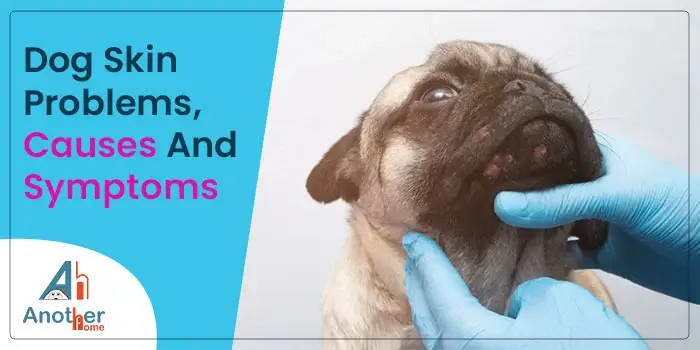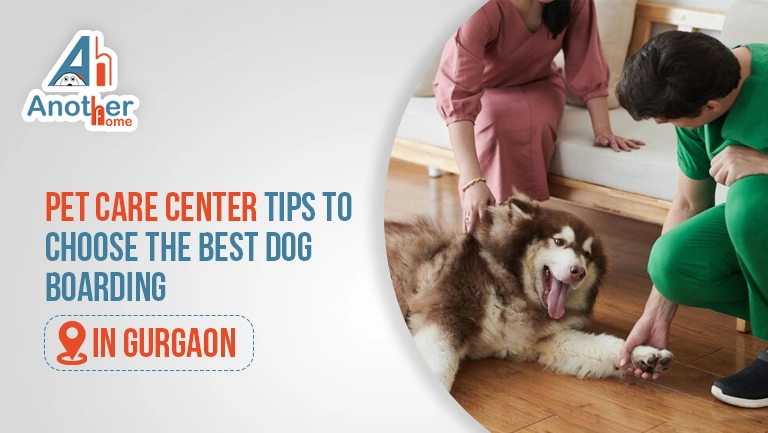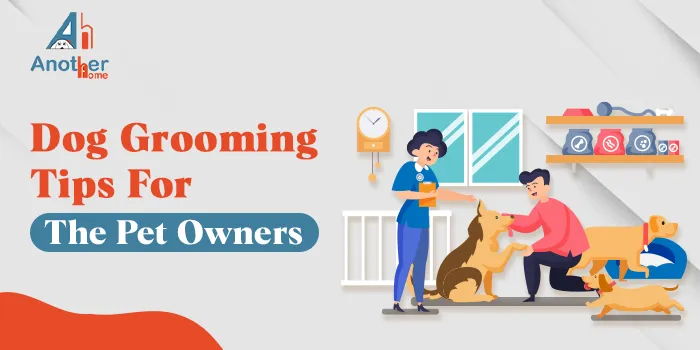Is your dog scratching and licking excessively? Does their skin look red with rashes or itchiness? Skin problems in dogs are the most common reason; pet owners seek Veterinary medical care centers.
The condition of a dog's skin is an important parameter that reflects the health of your little friend. A dog's continuous scratching or licking can be as irritating as scratching nails on a plain surface.
Like, humans have acne, and other skin problems, pets, especially dogs, also face skin problems. Our little best friends cannot speak or convey what they want. As responsible dog owners, we have to understand our dog's emotions.
It sounds like it is time to understand the common dog skin problems and how you can treat them.
How To Know If Your Dog Is Suffering From Skin Problems?
Unquestionably, the human-dog relationship is a long-lasting love coming from ancient times. As social beings, there is a natural bonding connection between people and dogs. As the dog's skin conditions are so visible, there are some symptoms through which you can check to identify if your little friend is facing skin problems;
- Redness
- Itching
- Inflammation
- Irritation
- Swelling
- Dry and flaky skin
- Scabs
- Hot spots
- Lumps
Why Is My Dog Excessively Scratching, Biting Or Licking?
Like humans, there are many factors which cause skin problems in dogs, which are as follows;
- Climate Conditions
High-temperature summer heat, direct sun rays, or dry indoor air in winters can cause dryness and itchiness in the skin. Whereas high humidity can trap sweat and dirt near your dog's skin, increasing the chances of getting infected with bacterial infections.
- Allergies
Allergies can also be a cause due to why your dog may be scratching excessively. Food allergies, skin allergies and environmental changes can complicate things for pets and their owners.
- Parasites
Parasites can be another common reason behind a dog's extremely scratching. These parasites can be extremely irritating and harmful for pet owners and cause various health problems in your dog. We can notice fleas and ticks from the naked eye, whereas mites are not visible.
- Hormonal Imbalances
Hormonal imbalances can decrease the dog's defenses and makes the skin more irritating. If your pet's body is not producing enough thyroid hormone or using excessive cortisol hormone, it can cause superficial skin infection diseases.
Common Dog Skin Problems
The sound of your little friend licking or scratching their paws can be irritating, and there can be various skin problems that your dog will be facing. Let's look at the common skin problems that your little friend may be suffering.
1. Yeast Infection
If your dog is continuously scratching their ear or licking its toes, you must ask the Veterinarian to check for a yeast infection. Yeast infection can be irritating, itchy and discolored skin for your little buddy. This infection usually strikes at paws or ears, where Yeast has a large space area to grow.
With a yeast infection, the skin gets more thickened, which causes your dog to lick and bite at the infected area, leading to an unpleasant smell. Yeast infection is easy to cure and often responds well to topical creams, washes and tablets.
2. Folliculitis
Folliculitis means inflamed hair follicles causing sores, bumps and scabs on the skin. It mainly arises when your dog faces other skin problems, such as allergies. Underlying systemic disease, local trauma or other specific skin conditions can lead to Folliculitis in dogs.
Some symptoms of Folliculitis in dogs are swelling, redness, itching, hair loss, hyperpigmentation, blackheads, etc. Folliculitis can be cured by topical treatments, oral prescriptions, shampoos and antibacterial ointments.
3. Ringworms
Ringworm is a fungus that grows and lives on the outermost layer of the skin and hair follicles. It is a superficial infection that affects only a few areas of a dog's skin. Ringworm in dogs can easily spread through direct contact with an infected animal or person or by touching contaminated objects like a couch, comb, food bowls, carpets, etc.
Untreated ringworm in dogs can cause circular areas of hair loss, dry or brittle hairs, scabby and inflamed skin or rough claws. Puppies less than a year old are most likely to be affected by ringworm disease.
Veterinarians will cure the ringworm disease in your dog by performing a diagnostic test and physical exam. Ringworms can be treated by medicated shampoos, oral medications, topical therapy, environmental decontamination, etc.
4. Mange (Mites)
Mange is a severe skin condition that is caused by severe species of mites living on the dog's hair and skin. All normal dogs have a few mites present on their skin. If the body's immune system works properly, these mites cannot harm your dog.
There are two types of mange; one is demodectic mange caused by Demodex mite, which tends to affect dogs under one year old. Another mange is Sarcoptic mange, caused by Sarcoptes mange, which is an intensely itchy condition commonly seen on the dog's ears.
The symptoms of Mange skin issue are red skin, intense itching, hair loss and sores. Mange disease can be treated with tablets and antibacterial shampoos to kill mites and ease itching and inflammation.
5. Hot Spots
Hot Spots, also called pyotraumatic dermatitis or moist dermatitis, are red, inflamed skin lesions that appear quickly, ooze and may contain pus. The most common body areas in which hot spots are found in legs, heads and hips.
These spots are mainly caused by self-trauma when a dog excessively scratches an itchy spot, which creates an open wound. Allergies, unhygienic grooming, boredom, and anal gland inflammation are all factors which can lead to Hot Spots in your dogs.
It is most common in hot and humid climates, and it sometimes arises when a dog is exposed to moisture immediately after swimming or in rainy weather conditions. You can prevent your little dog from hot spots by keeping your dog groomed and drying after a bath.
6. Skin Tumors
Dogs can develop cancerous tumors in their skin. If you notice a lump on your dog's skin, you must urgently reach out to the veterinarian. A fatty tumour is a very common disease in old dogs. Dogs can develop cancerous tumors on their skin, and the only solution to diagnose cancer is to biopsy the tumour.
Treatment of a particular tumour completely depends on the type of tumour, location, size and physical condition of the dog. The most effective solution for curing skin tumors is surgery, which is the least expensive option to cure the disease, with fewer side effects.
7. Dandruff
Like humans, dogs can also get dry or dandruff skin. While in humans, dandruff only affects the head hairs, in dogs, the dandruff problem mainly occurs in the back area, especially towards the tail. A dandruff problem in the dog can be caused by several factors such as allergies, hormonal imbalance, Immune-related issues, low humidity, bacterial and fungal skin infections, etc.
In most cases, good nutrition and regular grooming can help cure dandruff. Avoid using human anti-dandruff products, as these products can be extremely harmful to your little buddy.
Other recommended solutions that can help you cure dandruff are frequent brushing, regular bathing and grooming, a healthy diet and avoiding allergens.
8. Ticks
Ticks are external parasites, and it sucks blood from the dog's body. These bacteria live inside the cells and carry the dangerous bacteria in the body. The tick can cause potential illness; thousands of dogs are affected each year by Tick-borne diseases.
Some common signs through which you can identify Tick-borne diseases in dogs are fever, pain, bruising, lethargy, etc. To remove a tick from your dog's skin, grasp the tick with tweezers close to the skin and gently pull it straight out. Now, leave the tick in a jar for a couple of days and make sure to add some alcohol.
If you stay in an area where ticks are common, you must ask the veterinarian to provide a home remedy for dog skin problems.
Conclusion
It's important to understand that a dog with skin problems needs immediate health attention because that dog surely will not be feeling well. This can be caused due to why your little furry may suffer from skin problems. Consult your veterinarian to determine the causes of the skin problems. Feed your dog with nutritious food and groom it well.
To develop a healthy routine for your dog and prevent them from skin issues, you can reach out to our dog grooming service in Delhi. We at Another Home provide the best grooming services for your pets. We will remove dirt, oil and debris from your dog's skin to keep them prevented from dog skin problems. Call us now at +91-8800237327 to hire the best grooming services for your little friend.
Suggestion Reading: Tips To Introduce Your Dog To Other Dogs











